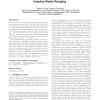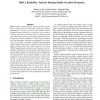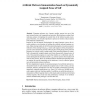17 search results - page 2 / 4 » RICH: Automatically Protecting Against Integer-Based Vulnera... |
WISEC
2010
ACM
14 years 22 days ago
2010
ACM
We expose the vulnerability of an emerging wireless ranging technology, impulse radio ultra-wide band (IR-UWB), to distance-decreasing attacks on the physical communication layer ...
USS
2004
13 years 7 months ago
2004
Buffer overflow exploits make use of the treatment of strings in C as character arrays rather than as first-class objects. Manipulation of arrays as pointers and primitive pointer...
CCS
2008
ACM
13 years 7 months ago
2008
ACM
Recent work has established the importance of automatic reverse engineering of protocol or file format specifications. However, the formats reverse engineered by previous tools ha...
ISW
2010
Springer
13 years 3 months ago
2010
Springer
Computer malwares (e.g., botnets, rootkits, spware) are one of the most serious threats to all computers and networks. Most malwares conduct their malicious actions via hijacking t...
CCS
2003
ACM
13 years 11 months ago
2003
ACM
Web-based vulnerabilities represent a substantial portion of the security exposures of computer networks. In order to detect known web-based attacks, misuse detection systems are ...



